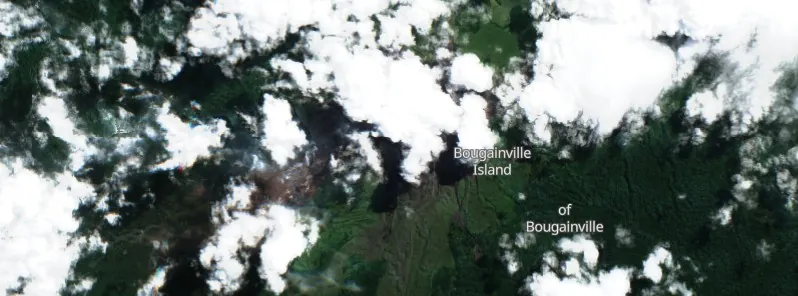Volcanic ash from Mount Bagana eruption contaminates water and crops in Papua New Guinea

The eruption of Mount Bagana volcano, located on the island of Bougainville, Papua New Guinea, has resulted in significant ash emissions, lava flow, and the displacement of over 8 000 people since July 7, 2023.
Mount Bagana, situated in the center of Bougainville Island, Papua New Guinea, has been experiencing multiple eruptions since July 7, 2023. These eruptions led to a considerable discharge of ash and lava flow. Due to the severity of the eruptions, the Autonomous Bougainville Government advised the inhabitants of Torokina and Wakunai Towns to evacuate. The fallout from the eruption has significantly contaminated the water sources and crops, particularly in the Wakunai area, leading to the displacement of more than 8 000 individuals.
The authorities have stepped in, providing food, water, and shelter supplies to those affected. At present, the volcano’s alert level is at stage 3, which is a severe warning on the four-tier scale used for volcanic activities. The situation escalated with a high-level explosive eruption around 21:30 UTC on July 14, 2023. This event projected a discrete plume of ash and gas to a height of 16.4 km (54 000 feet) above sea level.
The Darwin Volcanic Ash Advisory Centre (VAAC) classified the event as a discrete volcanic ash eruption, with ash moving north of the volcano. The ash cloud’s altitude was determined based on a cloud temperature of about -80 °C (-112 °F). Reports from the ground also indicate that the eruption resulted in a pyroclastic flow.
This eruption mirrored an earlier event on July 7, when a large amount of ash fell on nearby regions, a situation that continued until July 9. The Autonomous Bougainville Government report from July 10 indicated that significant ash began falling between 20:00 and 21:00 LT on July 7 and covered areas in Vuakovi, Gotana (9 km / 5.6 miles SW of the volcano), Koromaketo, Laruma, and Atsilima villages.
Satellite images showed that by about 22:00 LT on July 7, the eruption plume had reached upper tropospheric altitudes. Subsequent sulfur dioxide detections from July 8 satellite images suggested that the plume, likely a mixture of gases, ice, and ash, had risen to 16 – 18 km (52 500 – 59 100 feet) above sea level, reaching the tropopause.
The ashfall from the eruptions had devastating effects on the environment, covering vegetation, destroying bushes and gardens, and contaminating rivers and streams. These water sources, usually used for washing and drinking water, were unusable, forcing residents to rely on coconuts for hydration and fresh groundwater accessible through bamboo pipes.
References:
1 Papua New Guinea – Volcanic activity – DG ECHO – July 20, 2023
2 High-level eruption at Bagana volcano, ash plume to 16.4 km (54 000 feet) a.s.l., P.N.G. – The Watchers – July 15, 2023
Featured image credit: Copernicus EU/Sentinel-2, RAMMB/CIRA, The Watchers. Acquired on July 11, 2023

Commenting rules and guidelines
We value the thoughts and opinions of our readers and welcome healthy discussions on our website. In order to maintain a respectful and positive community, we ask that all commenters follow these rules.